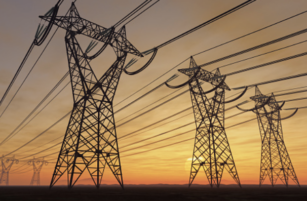Renewable Energy Laws and Regulations
Governments around the world are committing to clean energy. Many are encouraging investment by developing enticing fiscal frameworks, including tax incentives, to facilitate investment in low-carbon energy sources to meet these ambitions.
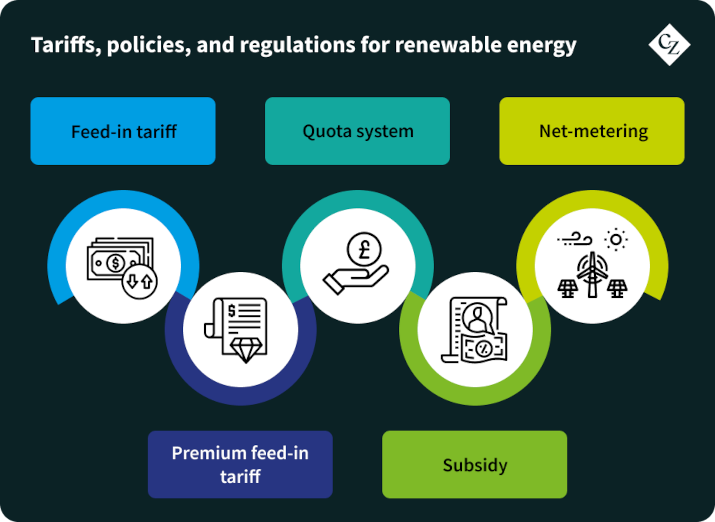
Feed-In Tariffs:
A Feed-In Tariff (FIT) is a policy that encourages the development of renewable energy sources by providing producers with a guaranteed, above-market price.
The two most common FIT policies are the fixed FIT and the feed-in premium.
- Fixed FIT: Payment level remains independent of market price, providing a guaranteed payment for a set period of time.
- Feed-in Premium: The payment level is determined by a premium offered above the market price of electricity.
Quota System:
A quota system is an incentive system in which the government establishes a percentage or amount of energy derived from renewable sources and then allows the market to determine the cost.
The rationale behind quota systems is that competition in this market will drive down the costs of supplying renewable electricity, lowering consumer costs of meeting renewable energy targets.
Net-Metering:
Net metering is a utility billing mechanism that allows customers to receive credit for the solar or wind energy they contribute to the grid.
Subsidy:
Energy subsidies are government payments that keep the price of energy lower than the market rate for consumers or higher than the market rate for producers.
According to Trinomics, tax incentives play an important role in promoting biomass use in Europe, with an annual value of EUR 275-296m.
Let’s look in more detail at how Europe’s largest power markets use these difference approaches.
Denmark
Overview
Bioenergy is Denmark’s most widely used renewable energy source, and it is critical to the country’s green transition.
According to the Danish Energy Agency, the use of biomass has increased significantly over the last two decades, making bioenergy the most widely used renewable energy source in Denmark. This trend is anticipated to continue, as several large-scale combined heat and power plants aim to switch from fossil fuels to woody biomass.
The International Trade Administration claims that despite Denmark’s small size and relatively high population density, the climate and hydrology of the country enable high biomass yields from agriculture. Presently, a significant portion of Denmark’s electricity is produced by combined heat and power (CHP) plants, which also provide heat to district heating systems. Coal, natural gas, biomass, and municipal waste are all used to power CHP plants.
Generation
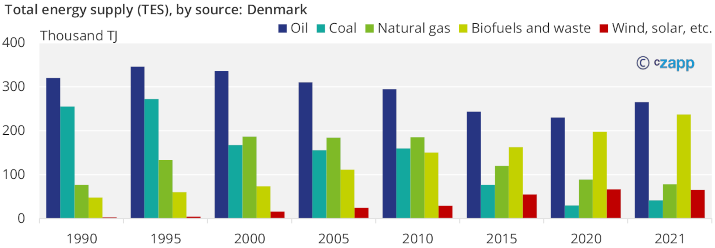
Source: International Energy Agency (IEA)
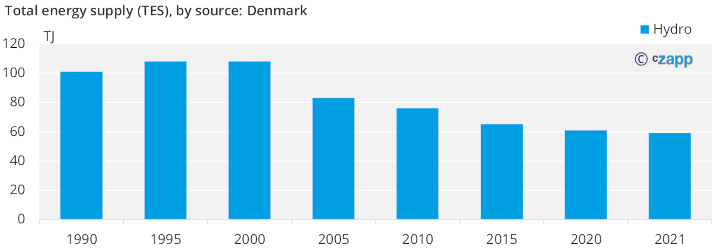
Source: International Energy Agency (IEA)
Renewable Energy Subsidies
Renewable energy is primarily promoted in Denmark through various means such as feed-in tariffs and tax incentives.
According to the Organization for Economic Cooperation and Development (OECD), the transition to biomass has been aided by an exemption from otherwise high energy taxes based on biomass’s status as a renewable energy source. Electricity generated by biomass-fired combined heat and power plants with unwritten-off capital costs receives a EUR 20/MWh premium over the market price.
Norway
Overview
With a 65% share of total final energy consumption, renewables make up nearly half of Norway’s total energy supply. Almost all electricity is generated by hydropower, while biomass is primarily used for heat and liquid biofuels.
According to the IEA, although direct biomass use decreased after 2012 due to pulp and paper industry closures, it still accounts for 30% of fuel and heating supply today.
Generation
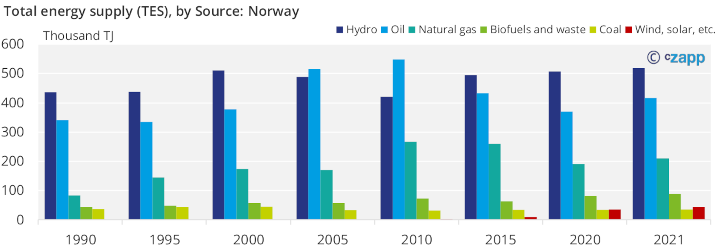
Source: International Energy Agency (IEA)
Renewable Energy Subsidies
The Energy Fund in Norway is managed by Enova SF, a public company that is owned by the Ministry of Climate and Environment. According to IEA Bioenergy, Enova and the Energy Fund were created with the intention of strengthening energy security of supply, reducing greenhouse gas emissions over the long term, and developing technology that does the same.
Enova helps with market development, technology development, and technology cost/performance reduction in this regard. For instance, Enova has offered financial support to help both smaller and larger district heating plants produce heat from renewable sources.
In order to promote increased electricity production from renewable sources, Norway and Sweden have also put into effect the Electricity Certificate Act.
Norway and Sweden have agreed to increase renewable energy-based electricity generation by 28.4 TWh by 2020. Regardless of where the production takes place, Sweden and Norway have each committed to funding 13.2 and 15.2 TWh, respectively. A further objective of Sweden is to finance an increase in renewable energy production of 18 TWh by 2030.
Under this scheme, the producers can then sell the energy to electricity companies, who in turn sell it to end users. As a result, the producers receive additional revenue above the market price, with the goal of increasing interest in investing in renewable energy sources.
Sweden
Overview According to the Swedish Institute, Sweden has a plentiful supply of moving water and biomass, which contributes to the country’s high share of renewable energy. Hydropower (water) and bioenergy are the leading renewable energy sources in Sweden, with hydropower primarily used for electricity generation and bioenergy used for heating.
Bioenergy
- The forest serves as Sweden’s primary source of bioenergy because it covers 69% of its total land area, more than most other nations. In addition to producing electricity and being used in industrial processes, bioenergy is primarily used for heating, including both residential and district heating.
Ethanol
- Sweden has been a world leader in ethanol research since the 1980s. However, the environmental benefits of ethanol over petrol have been heavily disputed due to the use of fertile land to produce ethanol, which is made from sugar canes, grains, sugar beets, or cellulose.
Generation

Source: International Energy Agency (IEA)
Renewable Energy Subsidies
Sweden implemented new regulations on July 1, 2021, allowing for tax reliefs on electricity generated by renewable energy sources such as wind, sun, or water, as well as biofuel.
Renewable energy is also promoted through subsidies such as the Electricity Certificate System. According to the Swedish Energy Agency, the Electricity Certificate System is a market-based incentive for the production of renewable electricity.
Wind, solar, geothermal, or wave power; biofuels; or small-scale hydroelectric plants should be used in order to qualify. Under this scheme, the producers can then sell the energy to electricity companies, who in turn sell it to end users. As a result, the producers receive additional revenue above the market price, with the goal of increasing interest in investing in renewable energy sources.
United Kingdom
Overview
According to IEA Bioenergy, the UK power system has undergone significant changes in the last decade, with coal power nearly completely phased out and renewable power (wind, biopower, and solar) accounting for more than 35% of electricity consumption.
According to the International Trade Association, The UK has an electricity generating capacity of some 76 GW with the following mix: 43.1% renewable, 35.7% gas, 16.1% nuclear, 1.8% coal and 3.3% other.
Generation
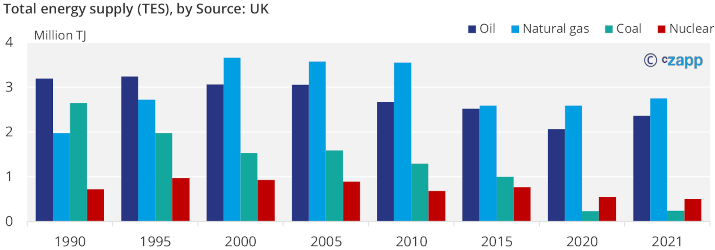
Source: International Energy Agency (IEA)
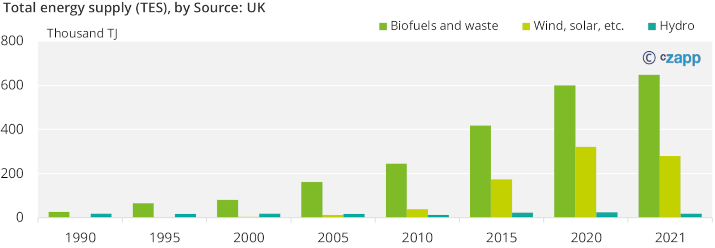
Source: International Energy Agency (IEA)
Renewable Energy Subsidies
Renewable energy is supported in the United Kingdom through a variety of incentives, including feed-in tariffs and a Contracts for Difference scheme.
The UK provides feed-in tariffs (FITs) for small-scale low-carbon electricity installed by householders, businesses, and communities. Additional compensation is provided for electricity fed into the grid.
According to Ofgem, FITs vary by technology, last between 10 and 25 years, and are inflation-adjusted. These FITs apply to hydro, anaerobic digestion, wind, and solar PV technologies with less than 5MW of capacity (or 2kW for Micro CHP).
The Contract of Difference (CfD) aims to encourage investments in new low-carbon electricity generation in the UK by ensuring the stability and predictability of future revenue streams.
A contract for difference (CfD) is a long-term agreement between an electricity generator and a Low Carbon Contracts Company (LCCC). The agreement provides the generator with the ability to maintain its revenue at a predetermined level for the duration of the contract (the Strike Price). Additionally, under the CfD, payments from the LCCC to the generator and vice versa are permitted.
When the market price for electricity generated by a CfD Generator (the reference price) falls below the Strike Price specified in the contract, payments are made to the CfD Generator by LCCC. When the reference price is higher than the strike price, the CfD Generator pays the difference to LCCC.
Netherlands
Overview According to the International Trade Association, the Netherlands generated approximately 118 billion kWh of energy in 2021. This represents a decrease of more than 2 billion kWh from 2020.
The production of fossil fuels fell by 33%, while renewable energy production increased by 22%. The top five energy sources in the Netherlands were as follows: natural gas (47%), wind (15%), coal (14%), solar (10%), and biomass (8%).
Generation
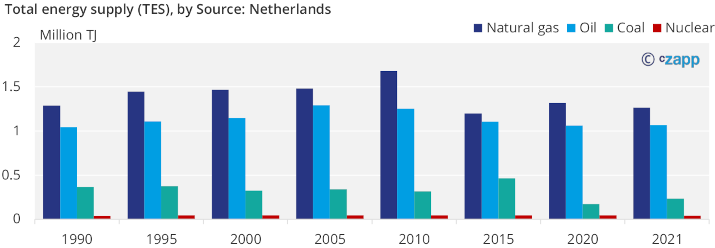
Source: International Energy Agency (IEA)
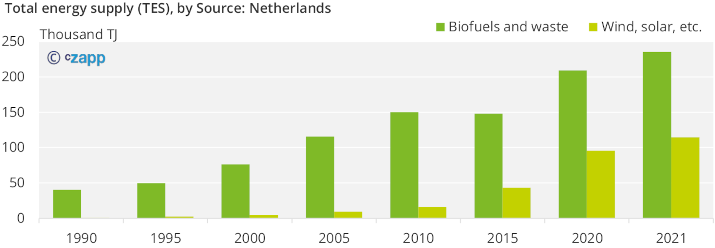
Source: International Energy Agency (IEA)
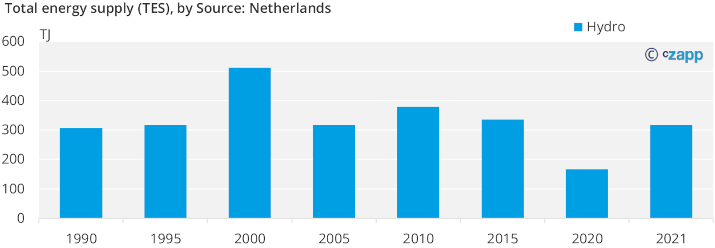
Source: International Energy Agency (IEA)
Renewable Energy Subsidies
In the Netherlands, the government encourages the development of new biomass energy technologies through various incentives such as the SDE grant scheme. The SDE++ provides subsidies for the use of renewable energy generation and CO2 reduction techniques. The SDE++ is an operating grant. This means that a person can receive the grant while their project is in operation.
The SDE++ subsidy will be granted over a period of 12 or 15 years. The length of the subsidy will be determined by the technology used.
Furthermore, renewable energy is promoted through tax incentives. According to the Netherlands Enterprise Agency, the Energy Investment Allowance (EIA) allows businesses to pay less tax when investing in energy-efficient technologies and sustainable energy. The average tax reduction is 11%, and the company’s investment lowers the energy bill.
The EIA (Energie-investeringsaftrek in Dutch) has a budget of € 249 million for 2023. Companies may be eligible for tax breaks deductions for both clearly defined (specific investments) and tailor-made (generic investments) investments that result in significant energy savings.
Italy
Overview
Italy is ranked among the top ten in Europe for both power consumption and renewable energy generation, and it is one of 14 EU countries that have met their 2020 renewables target as a percentage of total energy consumption (18.2% versus a 17% target).
According to the International Trade Administration, renewable power satisfied 36% of total electricity demand in 2021; solar power production increased slightly (2.1%), representing 21.7% of annual renewable electricity demand. Wind power increased 10.8% accounting for 17.8% of total renewable demand. Hydroelectric power fell 5.4% compared to 2020 accounting for 40% of total renewable generation. Biomass production in Italy amounted to 18,232 GWh, or 15.7% of total renewable energy demand, and geothermal power accounting for the remaining 4.8%.
Generation
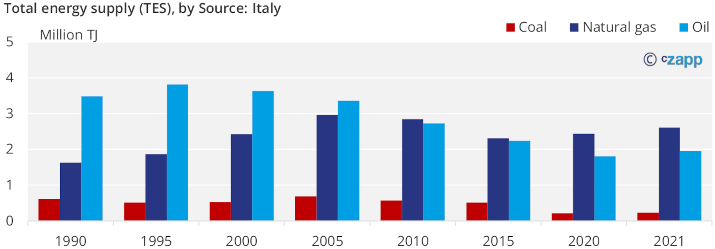
Source: International Energy Agency (IEA)
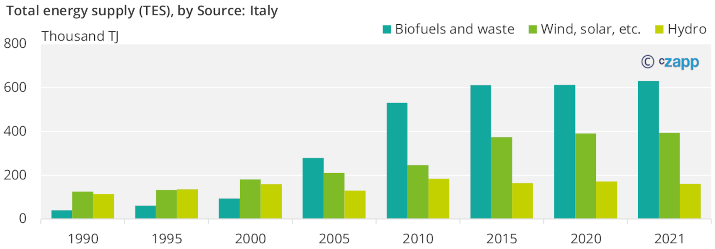
Source: International Energy Agency (IEA)
Renewable Energy Subsidies
In Italy, the RES-E support programmes are overseen by Gestore dei Servizi Energetici (GSE). Through feed-in tariffs and various tax incentives, the nation encourages the use of renewable energy, and producers can benefit from net metering programmes (also known as “scambio sul posto”) that compensate them for the electricity they supply to the grid.
Finland
Overview
Bioenergy is a significant source of renewable energy in Finland. About one-fourth of Finland’s total energy consumption in recent years has come from wood fuel. The majority of wood fuels are derived from the forestry industry and consist of by-products such as bark, sawdust, and other industrial wood waste, as well as black liquor from the pulping process. Other low-value biomass from harvesting operations, such as logging residues, is also used to produce energy.
In 2021, wood fuels accounted for 30% of total energy consumption and were the most commonly used energy source.
Generation
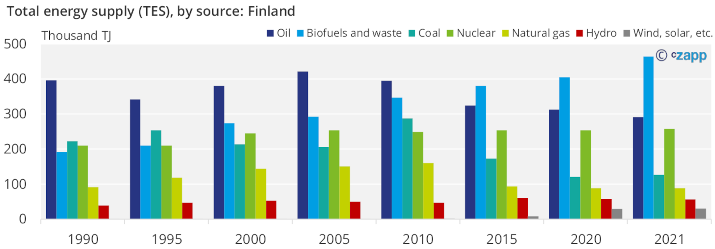
Source: International Energy Agency (IEA)
According to Thomas Reuters, in Finland, there are approximately 400 power plants and 120 companies that produce electricity. The main companies involved in electricity generation include:
- Fortum Power and Heat Oy
- Teollisuuden Voima Oyj
- Helen Oy (Helsingin Energia)
- UPM Energy Oy
According to the Energy Authority, the following sources generated electricity in 2019:
– Nuclear Power (approximately 35%)
– Hydro Power (approximately 19%)
– Biomass (approximately 18%)
Renewable Energy Subsidies
The Energy Authority administers the feed-in tariff scheme, which promotes the production of electricity through the use of renewable energy (including wind power, wood fuel, and biomass). In Finland, there are also tax breaks for using renewable energy sources, such as simplified taxation and the possibility of a tax refund.
On a case-by-case basis, the Ministry of Employment and the Economy may also provide energy subsidies to businesses, municipalities, or organisations for investments in climate and environmental protection that support the production or use of renewable energy.
(Source: Thomas Reuters: Practical Law)
France
Overview
According to the IEA, despite France’s notable progress in upgrading its energy transition framework, France is falling behind in terms of implementation. France has not met its 2020 targets for energy efficiency and renewable energy, and its 2030 emissions targets, set in 2015, remain unchanged.
Nonetheless, the French renewable energy sector is diverse, covering ten different sub-sectors: Wood energy: 35.2 % – Hydraulic 17.3 % – Biofuels 12.1 % – Wind 10.4 % – Heat pumps 9.6 % – Renewable waste 4.8 % – Biogas 3.4 % Solar 3.4 % Others (geothermic, agriculture, marine) 3.6 %.
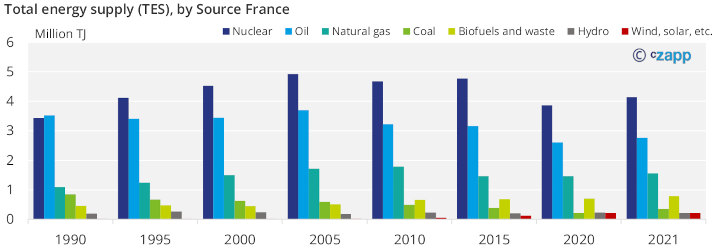
Source: International Energy Agency (IEA)
Three major players dominate the French energy sector:
- EDF – an electricity supplier,
- Engie – a gas supplier,
- Total Energies – the result of the merger of Total and Direct Energie.
Renewable Energy Subsidies
According to the International Energy Agency, France encourages the use of renewable electricity by offering feed-in tariffs for small-scale renewable plants and feed-in premiums in tenders for large-scale facilities. For projects involving biomass co-generation, onshore wind, rooftop solar, and offshore wind, large-scale tenders have been organised.
Heat generation from renewable energy plants is encouraged through a variety of energy subsidies, tax regulation mechanisms, and a zero-interest loan.
Furthermore, a quota system is the main support scheme for renewable energy sources used in transportation, and biofuels are subsidised by fiscal regulation.
Germany
Overview
The “Energiewende,” or energy transition, is Germany’s planned shift away from coal, oil, and nuclear towardss a low-carbon, nuclear-free economy based on the use of renewable sources.
According to the IEA, Germany intends to replace nuclear energy, which was first introduced in the 1970s, with more renewables in accordance with Germany’s energy transition targets. Furthermore, coal, which is currently the dominant source of power generation, is scheduled to be phased out entirely by 2038.
Generation
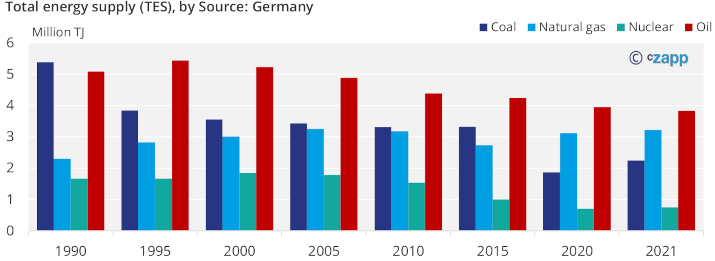
Source: International Energy Agency (IEA)
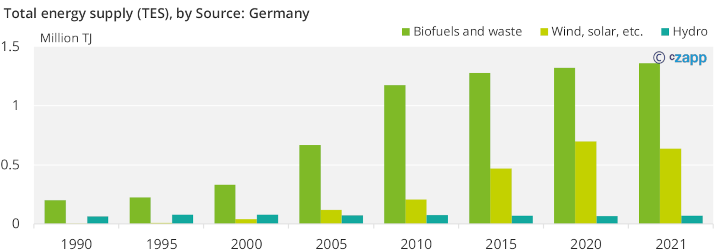
Source: International Energy Agency (IEA)
Only a few companies are involved in producing electricity from fossil fuels. The largest players are RWE, LEAG, Uniper, Vattenfall, and EnBW, but they face increased competition from renewable power plants.
Renewable Energy Subsidies
Renewable energy is primarily supported in Germany through a market premium scheme, and feed-in tariffs are used to support small power plants up to 100 kW.
A tendering scheme is used to determine the award and level of the market premium for the majority of installations.



